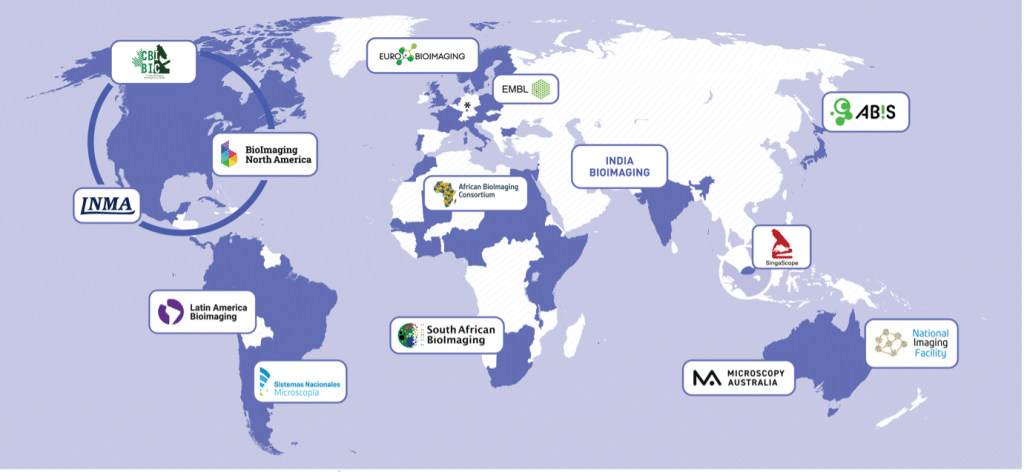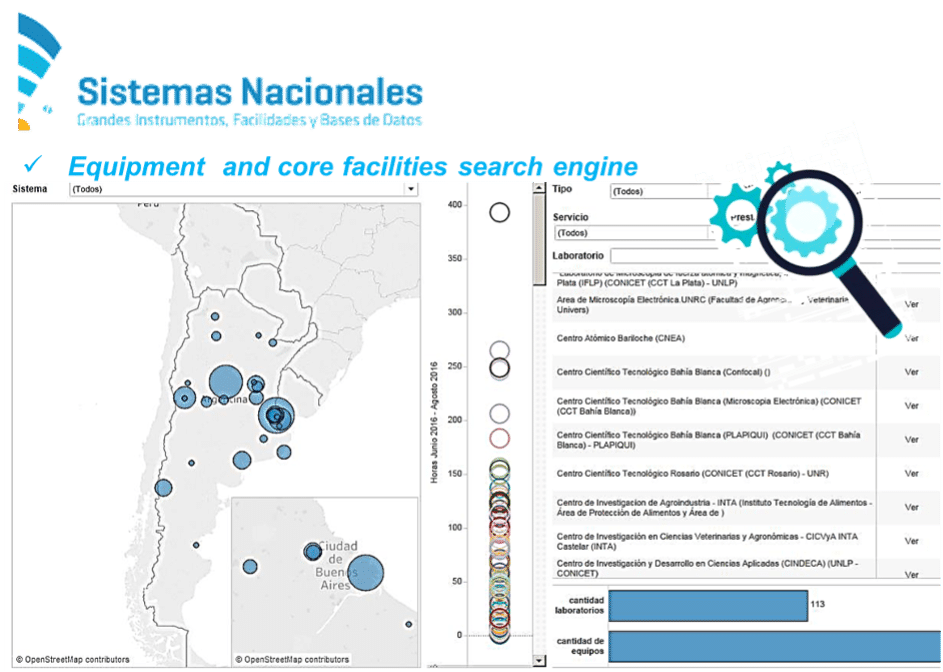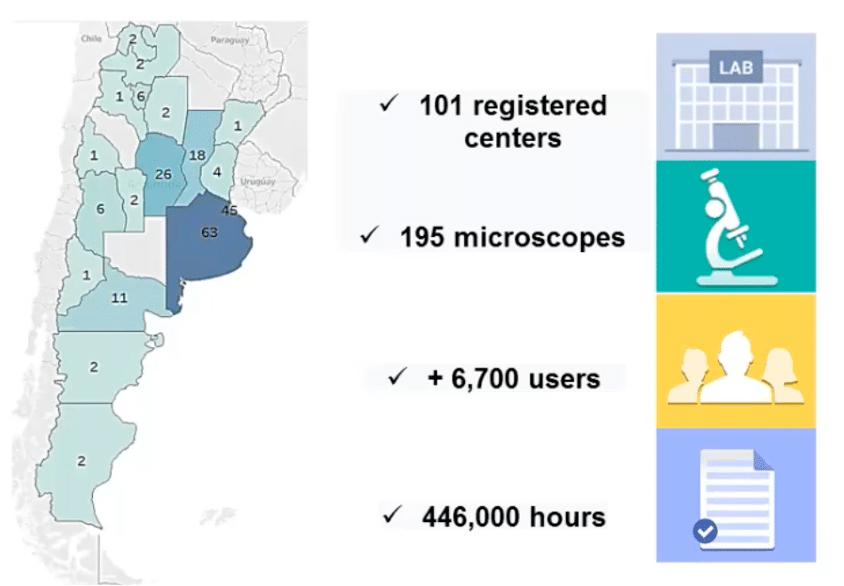Towards global access: Argentina’s Sistema Nacional de Microscopía becomes the newest signatory of the Memorandum of Understanding of Global Bioimaging
Posted by Mariana De Niz, on 4 December 2023
Joining international efforts towards ensuring global and equal access to microscopy technologies, last October 5th 2023, Argentina’s Sistema Nacional de Microscopía (SNM) became the latest signatory of the international Memorandum of Understanding of Global Bioimaging (GBI). We recently spoke with Dr. Yara Reis, external relations manager of GBI and with Prof. Lia Pietrasanta, one of the representatives of SNM at GBI and a member of the Executive Committee of Latin America Bioimaging – a key network in the region. Together, we explore the importance of this achievement for Argentine science, for Latin America, and for the international microscopy community.
Why is it important to ensure equal access to microscopy technologies?
Imaging technologies have long played a pivotal role in scientific discovery, biomedical advancements, and social transformation. Imaging brings together an international, multidisciplinary and multi-faceted range of scientists, including physicists, engineers, biologists, medical doctors, medical technologists, chemists, computer scientists, image analysis, science communicators, and policy-makers, among others.
Despite the importance of imaging to a plethora of scientific and clinical disciplines, important barriers exist which result in unequal access to technologies. Historically, access to imaging technologies (including hardware, software, and expert personnel) has been limited to laboratories which either have sufficient funding to acquire state-of-the-art microscopes from commercial companies, or have the expertise, and the human and monetary resources to develop their own technologies.
Over the last decades, the scientific community has taken significant steps towards achieving equal and global access. These steps include, but are not limited to, generating open hardware and software using low-cost technology; the creation of training programs focused on developing the careers of highly-skilled imaging specialists; the creation of core facilities and imaging hubs; and the creation of national systems and imaging networks, among others.
Developing countries face important barriers when it comes to access. Why? Because when resources are limited, and basic population needs (such as food safety, access to housing, safety from violence, access to medical care, or access to basic education) are unmet, some disciplines and the cost they represent, are seen as dispensable. While science and technology are vital to a country’s development, funding these disciplines often requires innovative solutions and expert lobbying to justify the cost and the need. It is in this context that we discuss in this article, the importance of SNM as an example of such innovation.
What is the role of Global Bioimaging in ensuring global access?
In the context of fostering collaborations and facilitating equal access, the imaging networks range from institutional, to global. Global Bioimaging is the largest international network that brings together multiple imaging communities across the world under one umbrella, with the purpose of providing a framework for collaborations and mutually beneficial alliances between its members. Under a memorandum of understanding, Global Bioimaging aims to facilitate multiple goals including: sustainable solutions for current challenges; facilitating capacity-building and sharing of expertise between its global members; facilitating access to expertise, facilities, and infrastructures to its global members; facilitating interactions with policy-makers; and facilitating coordinated representation for engagement with the global community. Moreover, in its mission itself, Global Bioimaging strives to ensure diversity, equity and inclusion, promoting equal representation at leadership positions, and among the signatories of the memorandum of understanding. Current networks under this umbrella include continent-wide networks such as Euro-Bioimaging, Bioimaging North America (BINA) and Latin America Bioimaging (LABI), Australia (represented by MA and NIF) and country-specific like those from Canada, Mexico, Singapore, South Africa, India and Japan. In this context, in 2023, Argentina’s ‘Sistema Nacional de Microscopía’ became the newest signatory of this MoU, joining as a country-wide network with impressive capacities and extraordinary effort in its strive for the democratization of microscopy in the country.

What is the Sistema Nacional de Microscopía, and what is the relevance of it becoming a signatory of GBI’s MoU?
Argentina’s Sistema Nacional de Microscopía (SNM) was born from a national effort to democratize access to resources – something vital to science and technology. SNM is part of a much larger system created in 2008, in pursuit of achieving global access: the Sistemas Nacionales (SSNN) de Grandes Instrumentos, Facilidades y Bases de Datos (National Systems Program of Large Instruments, Facilities and Databases). Several years ago, a national mapping of research infrastructures was carried out in Argentina, leading to the identification of existing capacities, diagnosis of operability conditions of large instruments (including microscopes), and access criteria to the services provided by all research institutes in the country. An outcome of this country-wide survey, was the detection of needs, demands and deficits that require coordinated solutions to optimize efforts and resources.
As a result, a multi-pronged innovative policy arose:
- It requires all government-funded institutions to register their microscopes in the Sistema Nacional de Microscopia, where anyone, anywhere in the country can book time to access each resource.
- In order to ensure the first point, in 2013, an important tool was created and adopted by SSNN (and SNM): the Sistema de Gestion de Turnos, a platform that allows users everywhere in the country, to see all microscopes available, and enables them to book those instruments, regardless of their location. It also ensures access to expertise and training, relevant for each instrument.
- As a requirement, at least 20% of the available operating time of each instrument is dedicated to the provision of services to external users, anywhere in the country.

It is important to note that very few systems exist in the world with this capacity, both in terms of the booking system, and such precise mapping of resources. The latter is an important point, because it is key for de-centralizing access. It is not uncommon in Latin America and other regions of the world, to see a skewed distribution of resources. Namely, capital cities and other big cities have access to the latest technology, while smaller cities and remote areas do not. This in itself is a major barrier to access, which is being fought at various fronts around the world. Argentina’s solution through both, the SNM and the Sistema de Gestión de Turnos is a significant step in this direction. In addition to the aforementioned systems, efforts to remove barriers to access to microscopy also include mobility grants which help researchers access the equipment they need, regardless of its location. In future directions, strategic plans include the identification of resources missing in each province, over-imposed to the needs for such equipment, which in a short, medium, and long-term plan will evolve into a more equitable distribution of resources.

The innovative SSNN database allows collection of important history and statistics of each imaging equipment in the country: its activity and usage, its operator, user profiles, projects using such system, what samples are observed, etc. This is key for various purposes: communication with key stakeholders, including funding agencies, policy-makers, decision-makers, the scientific community, and the general national community. Equally importantly, it is a vital testimony of Argentina’s expertise and infrastructure capacities. For instance, Argentina is a regional leader in both, electron microscopy and super-resolution microscopy, with access to STED, STORM, and MIN-FLUX technology throughout the country. With these major steps taking place over more than a decade in Argentina, SNM joining Global Bioimaging as a signatory is important for Argentina’s microscopy community, as it grants them a place in decision-making positions together with other world leaders. Prioritizing equal access to resources, SNM sets an inspiring example to the global partners, showcasing that a commitment to fairness and collaboration is essential for advancing scientific endeavours worldwide.


 (No Ratings Yet)
(No Ratings Yet)